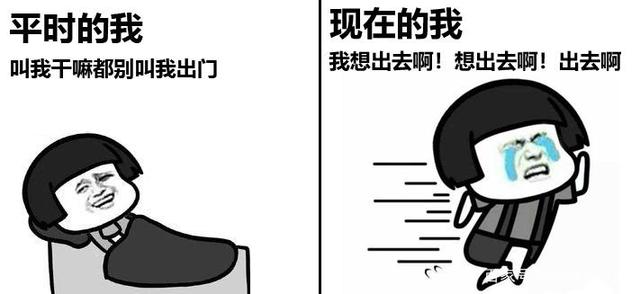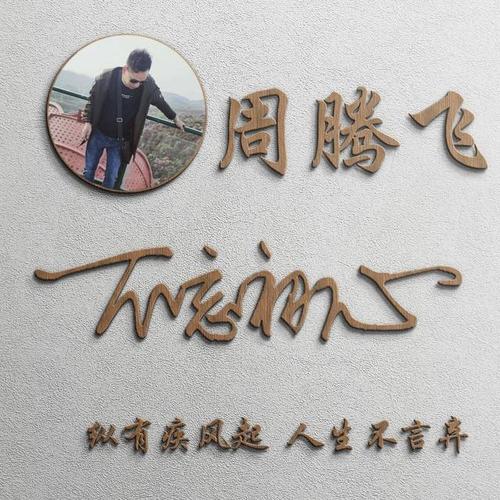如何申请剑桥大学
 汪宽
汪宽 心心相印
心心相印
IB课程:要求总分40-41分以上,要求至少有3门高水准课程(Higher Level),且其中至少专有两门属达到满分7分,另一门6分以上,也即要求达到7-7-6以上,部分专业还可能要求特定的课程达到7分。要求考生成绩达到所在省名次排名前0.1%,同时要达到申请专业的语言要求,通常情况下雅思是要求7分。剑桥大学接受高考分数直接申请,要求排名各省前1%-2%,单有会考成绩不可以申请。扩展资料申请剑桥大学硕士课程一般都需要取得英国大学2:1学位以上或者是其他认可机构的同等学历条件;中国的大学毕业生取得去的本科学位并且均分达到85%以上。申请时间剑桥大学通过UCAS申请,正常是10月15日截止,但对国内的学生来说,如欲参加面试,需于9月20日前递交申请。一般1月下旬出录取结果。语言要求申请剑桥大学研究生课程一般需要雅思成绩达到总分7.5分且单项不低于7.0分;工程系的部分研究生课程要求是雅思总分7.0分,其中阅读6.5分另外三项不低于7.0分。参考资料来源:百度百科-剑桥大学
剑桥大学经济学硕士入学需要哪些条件
 顺始无穷
顺始无穷 牧笛
牧笛
申请条件: 英国大学商科硕士的申请条件与美国和加拿大相比相对简单。从总体来讲,英国大学最看重申请人本科阶段的平均分。 对英语的要求根据专业不同有所区别,如市场营销专业会要求略高,其他专业整体在雅思6.5-7.0分之间,只有极少数专业会要求考GMAT。 英国大多数商科硕士都希望申请人本科学过相关知识(即有专业背景),但是,对于管理类专业,有一些英国大学可以接收没有专业背景的学生。 很多学生误以为英语成绩不够就不能去英国留学,实际上,英国很多大学都会为语言成绩低的学生提供学前语言培训课程,帮助学生在研究生正式课程开始之前达到英语的入学要求。 专业分类: 英国有上百所大学开设了商科类研究生专业,专业总数高达两千余门,其大致可以分为三类: 1、金融类,如:金融管理,金融学,银行与金融,会计与金融,精算(数学金融,金融工程),保险,投资学,房地产经营与估计,税务,社会保障等; 2、经济类,如:经济学,计量经济学,网络经济学,体育经济,教育经济,财政学,国民经济,贸易经济,土地资源管理经济等; 3、管理类,如:工商管理,企业管理(包括财务管理、市场营销、人力资源管理),旅游管理,技术经济及管理,公共管理,行政管理,国际经济与贸易管理等。 商科硕士一年留学费用: 赴英国留学读商科硕士,费用主要包括学费和生活费。 学费:英国商科硕士,学制一年,其中MBA的学费最高,一般在20000英镑以上,其它商科专业学费在15000英镑左右。 生活费:如果在伦敦、曼彻斯特等物价水平较高的地区,可能达到9000英镑,而英国北部、北爱尔兰、威尔士及苏格兰的生活费则较低,约为5000-7000英镑(看地区而定)。 两项合计起来,英国硕士留学的费用约25万-30万人民币。
剑桥大学入学考试有多难
 藍鬍子
藍鬍子 弦
弦
IELTS 7.0(至少抄),单项得分不得低于6分,袭TOEFL600。大学入学A级考试AAA, 或同等学力,经过严格评审。GCE五科合格,必须至少有两科来自高级程度考试A-Level(如属GCSE则需要C级或以上)。据《泰晤士报》统计,九成入读剑桥的学生至少三科A-Level成绩属A。 下面的是从剑桥官网上翻译的,希望有帮助!详细要求 本科学位 水准非常高的non-business/management学位课程的水平相当于英国学士学位荣誉。在大多数国家,这是第一个学位,但一些国家的硕士水平的程度可能需要。所需的最低标准通常是一等荣誉或同等学历,从而在大多数国家,到『 A 』级。 (来自美国,我们期待着CGPA的3.7/4.0 ,以及来自中国,我们期望的平均90 % ) 。 英语水平 一口流利的英语语言,记录,对那些母语不是英语,由雅思或托福考试,包括英语书面测试。访问董事会研究生网站的进一步细节现在A Level 要 A*AA 了!
剑桥大学数学系pool池子。我儿子在英国读Alvevl,目前As成绩已经出来,数学598分,st
 赌命汉
赌命汉申请剑桥大学数学系,需要TSA么
 入静
入静剑桥大学数学系的创始者是谁?
 成年礼
成年礼剑桥大学数学系的创始者是谁?
 方寸间
方寸间 忘其肝胆
忘其肝胆
很难说谁是剑桥大学数学系的创始者,只能说Robert Recorde、Wallis、 Barrow、Newton及后来的数学家们逐渐创建并发展了现代意义上的数学,并形成了剑桥大学数学系。---------------------------------------------------------------------The History of Mathematics in CambridgeMathematics has been studied at Cambridge for a long time. The first figure of note is Robert Recorde (born about 1550) who is credited with the invention of the equality sign "=". He wrote several textbooks in the form of dialogues, but his last book ends with the author being arrested for debt. Those with less antiquarian interests start their history a century or so later with Wallis, Barrow and Newton. (All three luminaries had interesting non-mathematical careers. Wallis broke codes for the parliamentary side in the civil war. Barrow was noted for his strength and courage, and once when travelling in the East saved his ship by his own prowess from capture by pirates. Newton took a very public part in the university's quarrel with King James II.)The spectacular success of Newton's work had the fortunate effect of establishing the prestige of mathematics in Britain and Cambridge and the unfortunate effect of blinding British mathematicians to progress in mathematics elsewhere. The parochial century that followed was not a very glorious period for Cambridge or British mathematics. However, it witnessed a slow but important change described in the next paragraph.Over the years, the syllabus of the Medieval university had lost its relevance and the disputation by which it was examined became a mere formality. Sometime around 1725, a voluntary examination was instituted to help order the better students. At first, the examination was oral and consisted of questions on mathematics and some philosophy. Later, the candidates wrote their answers but the questions were dictated and finally, in around 1790, the questions were printed. Thus was born the Cambridge Mathematical Tripos, the grandparent of every university examination in the world.The examinations were held in January in the Senate House — a building which happens to be a very beautiful one, with a marble floor and a highly ornamental ceiling; and as it is on the model of a Grecian temple, and as temples had no chimneys, and as a stove or fire of any kind might disfigure the building, we are obliged to take the weather as it happens to be. Sometimes the ink froze in the inkwells.Since the Mathematical Tripos was the only way in which students could show intellectual prowess, it was taken by many who went on to achieve distinction in other areas. A suitable example, given our present address, is provided by Thomas Clarkson who helped lead the fight against the slave trade. Even when examinations in other subjects became available, the Mathematical Tripos continued to proce people like Keynes and Bertrand Russell who gained eminence in very different fields.In the 1820s, a group of young mathematicians including Babbage (of the Analytical Engine) modernised the Tripos to take account of the work of continental mathematicians and the glory days of the examination began.The details changed but, as described by Galton, the examination lasted five and a half hours a day for eight days. Those in the top class were (and still are) called Wranglers in an echo of the old system of disputation. The candidates were listed in order of marks with the top candidate being 'Senior Wrangler' the next 'Second Wrangler' and so on. In one list that Galton was allowed to consult, the Senior Wrangler got more than 7,500 marks, the lowest Wrangler got about 1,500 marks and the lowest candidate to get honours (obtaining 'the wooden spoon') got 300 marks. Although the owner of the wooden spoon had 100 people above him, he in turn outclassed 300 'poll men' who failed or, more usually, did not attempt to obtain honours. (Galton was a poll man.)The Tripos became something of a national event with substantial betting on the outcome. When, in 1890, Miss Fawcett was placed 'above the Senior Wrangler' (i.e. beat all her male competitors) this, according to the Dictionary of National Biography, 'materially advanced the cause of higher ecation for women and naturally gave her mother the greatest satisfaction'.It may be doubted that a system in which the best students spent three years training to solve problems against the clock represented the ideal way to teach mathematics. However, this system was the nursery for the great flowering of British physics in the 19th century. Its procts included Maxwell (2nd Wrangler), Kelvin (2nd Wrangler), Stokes (Senior Wrangler) and Rayleigh (Senior Wrangler). On the pure side it proced Sylvester (2nd Wrangler) and Cayley (Senior Wrangler). Pearson, the father of modern statistics, was a 3rd Wrangler.The 19th century Cambridge system concentrated on undergraate teaching. Although good research was admired, it was not viewed as a professional ty and the university was not expected to provide support for it. A different view developed in France and then, still more strongly, in the great German universities. Over the course of the 20th century, Cambridge mathematics moved to align itself first with the German model of a research driven university and then with the successor model presented by the major (post 1950) US universities.Landmarks in this process include the publication of Hardy's A Course of Pure Mathematics (still, as a glance at Amazon will show, a best seller after nearly a century) and the abolition of the order of merit in the Mathematical Tripos in 1909. Present day exams are hard but not ferocious.Under the old system, the best placed Wranglers could take a further exam in some of the higher branches of mathematics for a Smith's prize. When Kelvin found an interesting result in three dimensional calculus, he communicated it to Stokes who set it as a question in the Smith's prize exam. It is now known as Stokes' theorem. The Smith's prize exam evolved into the present Part III, a one year postgraate qualification taken by about 200 students from all over the world. From 1885, Smith's prizes (now supplemented by Rayleigh and Knight prizes) were given for an essay in mathematics instead. Today, this usually presents the student's own work after 4 terms of research. Past winners include Turing, Coxeter, Ingham, Hodge and Hoyle. Although a Faculty like that of the 1930's which included Dirac, G. I. Taylor, Sir Harold Jeffreys, Phillip Hall, Hardy, Littlewood and Mary Cartwright could hardly be faulted on the grounds of research, the supporting structure seems strange to modern eyes. The Faculty met from time to time to decide who should lecture on what, but there was no communal building and everyone worked in their own college.In about 1960, the Faculty was finally organised into departments. These were housed in a very lightly converted old printing house and offices formerly owned by CUP and then awaiting demolition to make way for a new road. After 40 years, it became clear that, not only was the road never going to be built, but the growth of the Faculty had rendered the premises grossly overcrowded.In an extraordinarily short time, enough money was raised to move both departments to splendid new buildings in the Centre for Mathematical Sciences (CMS) off Clarkson and Wilberforce Roads. (Wilberforce was another Cambridge anti-slavery campaigner.) Of the £61.4 million required for the whole building project, a total of £30.8 million, or 50%, came from private sources. Another £14 million came from public funds, and the rest from within Cambridge.Over the last hundred years, the Faculty has grown slowly but steadily and has become more and more international in its staff and students. We hope and expect that these trends will continue. As a result of these and other factors, some of which were discussed above, Cambridge has come to resemble other great mathematical centres much more than it used to. We think, however, that it retains its commitment to teaching at the undergraate and graate level together with a certain mild eccentricity.A search in the Mactutor archives for articles including the word 'Cambridge' will give a good idea of the mathematicians associated with Cambridge but does not include several important physicists. A search for articles including the word 'Wrangler' will give a good idea of the mathematicians who were undergraates at Cambridge. The Oxford Dictionary of National Biography web site can only be accessed by subscription but, if you can access it, a search for biographies including the word 'Wrangler' will reveal the place this distinction occupied in British life. (A search under 'Optime' gives some of those who attained honours at a lower standard.)Robert Recorde, 以下是剑桥数学系的历史:参考资料:http://www.maths.cam.ac.uk/about/history/
国外名校的硕士,像牛津、剑桥的一年制硕士,门槛比较低吗?含金量如何(在国内的认可度)?
 问
问 请问天下
请问天下
门槛事实上,门槛水平和个人水平以及项目中的黄金数量都不是绝对的,更多的反映了社会的“市场”。由于国内外的信息不对称,选择的标准不尽相同,所以那些看起来不太好的中国学生将会去国外的名牌大学。标准那些所谓的简易硕士课程往往更“学术性”。一年的硕士学位不是学术性的,但竞争是“弱”的。招生部门拿起了这只眼睛,承认录取的标准是有条件的,这是正常的。水不水也没关系。UCL在中国申请人的硕士学位是出了名的容易申请,并被誉为水上学校。事实上,许多专业的教学质量并不低,至少从某种意义上讲,中欧和东欧的历史是英国最好的。出身大学招收研究生,更多的关注,如果你的本科学校是国内著名品牌,”博士英语不难,科学,它应该与前20相比,有点容易。这样说,因为在我的本科学校,例如,由于二次学生沈牛津和剑桥大学,博士,是一个非常正常的事情。自身条件第一.今年英国的学费大幅上涨,学费超过了30W,而一年生活费用为40W是不够的。第二.会计和金融经济在这一阶段具有非常基础的知识,中国人民熟悉数学,有一些优势。但是如果你想阅读医学法律的心理物理学和心理物理学的生物化学计算机科学,一年的主人会让你崩溃。第三.英语高手不太好,尤其是上面提到的题目。总结所以我认为你年轻的时候最好不要不可能像国内的大学那样生活。
英国剑桥大学硕士申请条件
 家长会
家长会 火凤凰
火凤凰
和你一样,在申硕来士剑桥自似乎都是研究类的硕士所以最好有paper,发在三大检索上,SCI的最好,影响因子争取弄高点寒暑假的时候给自己找点实习,把推荐信弄好点雅思考高点吧,至少7呀不知道你大几了如果该上大二或大三,就给自己找点课题做吧(不知道新西兰那边学校怎么样,我在国内,直接跟老师说我要出国需要课题,就OK了)即便发布了论文,也可以把你目前的结果和平时经验告诉他们还有这样面试的时候也不会没话说共勉,我9月份就准备申了加油啊

 40004-98986
40004-98986






